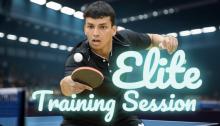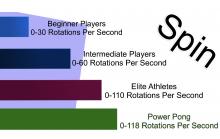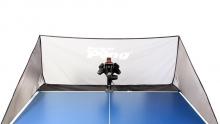by msgraber on Thu, 2025-09-25 14:20
New Coaching Article By Samson Dubina
8 Myths That Are STOPPING Your Success
You have been lied to
You have been told that your improvement depends on your age, your training partners, how long you have been playing for, your talent level, your hours on the table, the types of drills you are doing, your fitness routine, your forehand timing, your footwork speed, and many other physical factors!
I used to believe these lies as well. Until something happened...
by msgraber on Mon, 2025-09-08 21:28
Senura Silva and Samson Dubina
by msgraber on Fri, 2025-08-01 06:24
by Samson Dubina on Wed, 2025-07-30 09:41
Try this 1 weird-simple trick!
Serve Return Simplified
There are 2 primary ways to read the spin – watch the racket and watch the bounce. The pitfall that devastates most beginner/intermediate players is the timing. When they don’t know the spin, they panic and trap the ball too quickly. The correct move is to wait. Wait. If you couldn’t tell the spin from the contact point when your opponent touched the ball, then wait. Let the ball rise, then even drop a bit before returning it.
How does that make the return easier? There are 5 ways…
by msgraber on Wed, 2025-07-30 06:01
Add "THIS" To Your Daily Training
by msgraber on Sat, 2025-07-19 17:20
How to Benefit More From Your Lessons
by msgraber on Wed, 2025-06-18 10:43
Tournament Tough in 20 Steps
-By Samson Dubina
#1 SET GOALS
by msgraber on Wed, 2025-06-18 10:02
--------------------------------------------------------------
Hi Friends!
by msgraber on Mon, 2025-04-28 15:49
Coaching Article By Samson Dubina
Learning Stages
Today, we want to show you the stages of learning a new skill. For illustrative purposes, we are going to use the backhand loop against backspin as an example for you today. This approach can be used for any stroke, such as pushing, flipping, looping, counter-looping, lobbing, chopping, smashing, and any other skill that you want to develop. Before beginning stage one, take a few minutes and assess your game for strengths, weaknesses, tendencies, and game patterns.
Backhand loop against backspin
by Samson Dubina on Wed, 2025-04-09 08:08
Just like any other table tennis skills, developing a tactical mindset takes discipline. As I work through the various styles over the coming weeks and teach you how to play against various opponents, I want you to understand that you too can think of your own tactics. I’m not very smart, I’m just an average guy. However, I do spend quality time thinking. You too can develop this same discipline.
Pages













